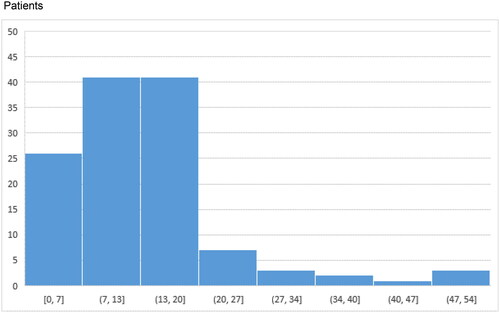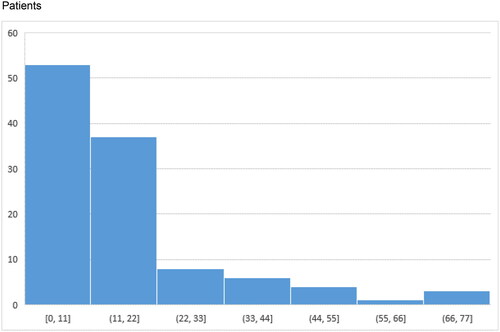Figures & data
Table 1. Sociodemographic and clinical characteristics of the valid sample (N = 124).
Table 2. Patient-reported psychological distress as measured by CORE-OM item scoresTable Footnotea, domain subscales and total scale (N = 124).
Table 3. Treatment duration, number of sessions offered and attended and termination of treatment (N = 124).
Table 4. Linear regression models with CORE subscales as predictor variables and treatment duration, number of therapy sessions and treatment attendance (number of therapy sessions attended/offered) as outcome variables (N = 124).
Table 5. Logistic regression model with CORE-OM scales as predictor variables and termination of treatmentTable Footnotea (planned versus unplanned) as the outcome variable (N = 124).
Data availability statement
Data are available upon reasonable request.


